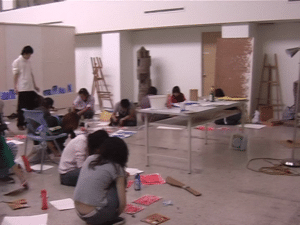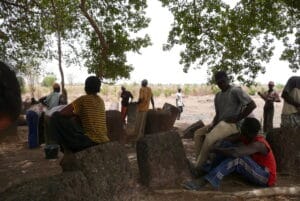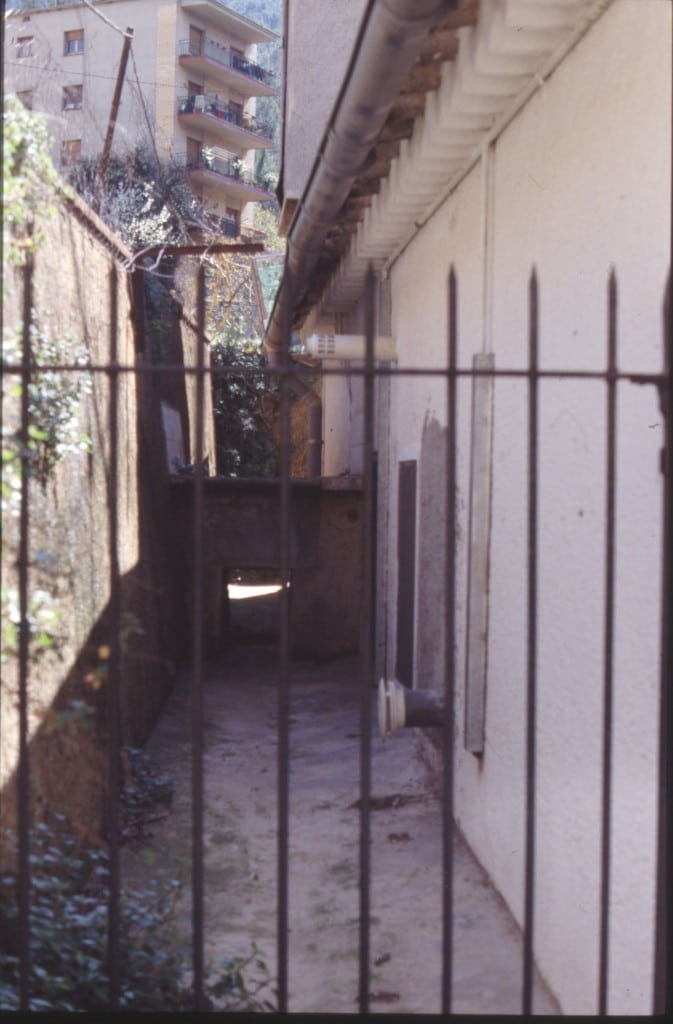Letter from Ken Kiff about teaching art
This video contains the reading of a letter written by Ken Kiff to Eva Bosch giving some ideas about possible ways of teaching art to young students.
Eva was planning to apply for an Art teaching job in Barcelona, back in the 90’s.
(B&W photograph courtesy of the estate of Ken Kiff).
Ken Kiff, RA (29 May 1935 – 15 February 2001) was an English figurative artist, who was born in Dagenham and trained at Hornsey School of Art 1955-61.He came to prominence in the 1980s thanks to the championship of art critic Norbert Lynton, and a cultural climate intent on re-assessing figurative art following the Royal Academy’s ‘New Spirit in Painting’ exhibition in 1981. He started exhibiting at Nicola Jacob’s gallery, moved to Fischer Fine Art in 1987, and finally to the Marlborough Gallery in 1990, by which time he had begun exhibiting internationally and had work in major public collections. He was elected to the Royal Academy of Arts in 1991 and became Associate Artist at the National Gallery 1991–93. His 30-year teaching career at Chelsea School of Art and the Royal College influenced a generation of students.
Kazi Izleri – February 2022, Istanbul, Dundee, Barcelona

Photo taken by Cengiz Çavuşoğlu at the Kazi Izleri exhibition in Istanbul, February 2022.
11 June 2022 The weekly Mag
Artist in Residence – March 2007 – Tainan National University of the Arts.
2007 March – Tainan National University of the Arts. Tainan, Taiwan (ROC)


I was invited by artist and pupil Hun Yi-Chen (1971-2011). Yi died suddenly, four years after
my visit to Tainan. She was an excellent painter, and by then, a great teacher. The painting
under the three images of her, is titled “Fine Art III”, 1997, oil on canvas, 60×53 cms




The studio I had during my Artist in Residence, was surrounded by extraordinary examples
of primary and secondary colours which are portrayed in the paintings I produced there
(see “Chinese Fa” 2007). The university campus resembled a little Venice but the variety of
insects, frogs and rich flora was a constant reminder of China. The universal language of
rich colour allowed me to cross the language barrier and made possible a course
on colour which was carried out by walking around the campus with the students and
doing live studies in situ from the variety of samples on display.The residency concluded
with several lectures and workshops.
 +
+






The visit extended to Taichung where I tutored a group of MA students from Dayeh
University in Changhua under the leadership of artist and pupil Alton Huang.
Photos of him followed by one of his works.




Research Retreat at Ngayene, Senegal May 2007






2007
May – Research Retreat at Ngayene, Senegal.
The Sine Ngayene Archaeological Project aims to investigate the structure
and dynamics of the cultural landscape along the Petit-Bao Bolong
Drainage in South Central Senegal. The site contains Megalithic stones of
various sizes spread on large cemeteries dating from the late second
millennium BC to the mid-second millennium AD. The archaeological
research conducted by Prof. Holl, an archaeologist born in Cameroon, and
current curator of the University of Michigan’s archaeological museum is
presenting new theories on how the ancient Senegalese perform rituals
and buried their dead. The evidence Prof. Holl collected from the
monuments (skeletal and metal data) indicates not a primary, but a
secondary burial culture. His research aims at casting further light on a
culture where prestigious families re-buried their dead in a manner that
resembles the practice of erecting halls of fame. Together with his
colleague from the Sorbonne, Dr Hamady Bocoun, director of Senegal’s
Cultural Heritage and National Patrimony, they are working to preserve
and investigate further the Sine Ngayene site.
Professor Holl invited me to join his excavation. I witnessed and took
photographs of the digging and the careful removal of ancient ceramics.
Skeletons emerged from the dry earth which were carefully cleaned while
pages of data were written down. I gathered much visual information
which was expanded during lively debates with the professor and his
students during the long dark nights – there was no electricity at the site.
The megaliths, the extraordinary dryness of the land, the heat, the
villagers’ way of life and the 8-hour jeep-journey across Senegal provided
me with a portfolio of images that are key references from which I am
working at present along with the material obtained in Catalhöyük.
Artist in Residence 2007 Çatalhöyük





Artist in Residence Summer 2007 Çatalhöyük
Çatalhöyük as a very large Neolithic and Chalcolithic proto-city settlement in southern Anatolia, which existed from approximately 7500 BC to 6400 BC, and flourished around 7000 BC.
Çatalhöyük is located overlooking the Konya Plain, southeast of the present-day city of Konya (ancient Iconium) in Turkey, approximately 140 km (87 mi) from the twin-coned volcano of Mount Hasan. The eastern settlement forms a mound which would have risen about 20 m (66 ft) above the plain at the time of the latest Neolithic occupation.
A lovely story – Catalhoyuk 2007
A lovely story – Catalhoyuk Summer 2007
Goddess made of bread dough
Sots Feréstecs
Locations
Çatalhöyük 2007- experimenting with ancient plaster
937. Plaster Çatalhöyük Rabbit skin glue 1/10 boiled walnut (one side) green= cold red= hot 11x11x2.5 cms September 2007
Experimenting with plaster
936. Charlie’s plaster Çatalhöyük + varnish + walnut extract 11x11x2.5 cms 21
September 2007
935. Charlie’s plaster Çatalhöyük + varnish + walnut extract 12x11.5x2.5 cms September 2007
938. Charlie’s plaster Çatalhöyük + varnish + walnut extract 12x12.5x2.5 cms September 2007
939. Plaster Çatalhöyük Serena’s plaster + varnish + iron oxide + animal fat 10.7x10.7x2.5 cms September 2007




















